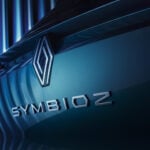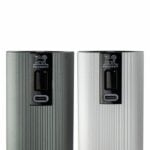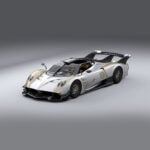In theory, through the Rabla program, Dacia Spring is one of the most affordable new cars you can buy in Mioritic lands. In practice, it sells significantly better in the West. But there is an explanation.
On paper, Dacia Spring had a good year in Romania. Out of the total car deliveries in our country, it occupied the fifth position in the ranking. In the area of electrics, it was the best-selling car. If you look at the actual number of units sold, it sold much better in other countries, with the same population or less, although the purchase price there was significantly higher, in the absence of the Rabla program.
Romania is not ready for electric cars, regardless of whether we are talking about Dacia
Statistically, in Romania, in December, 1500 copies of Dacia Spring were sold. For the whole last year, and considering that it arrived in dealerships only at the end of October, the number was 3000. Thus it reached the fifth position in the ranking of the best-selling cars.
The new car market was reflected in 2021 in 120,000 units purchased. Logan was in first place with 13,000 units, followed by Duster with 9000 and Sandero with 8200. Ford Puma was in fourth place with 3141 units, closely followed by Dacia Spring. If you are curious about the subject, the top 10 was completed by Renault Clio, Hyundai Tucson, Skoda Octavia, Toyota Corolla and Toyota CH-R.
Compared to the above values, in the same year, 6338 electric cars were sold in our country. Spring finished second in the standings, followed by Volkswagen with 985 units and Hyundai with 448 units. Renault was four with 347, followed by Tesla with 223. Skoda, Peugeot, BMW, Mercedes and Mini finished in the top 10.
In other words, electric cars had a market share of 5% in new car registrations in 2021. Gasoline cars maintained a stable share of over 65%, diesel cars fell to 19% from 27% a year ago. The explanation behind this discrepancy is related to the charging infrastructure. In Romania there are about 500 charging stations, of which 100 are only in Bucharest. In other words, many routes are impossible to approach in Romania by electric car drivers, because they do not have any charging station.
“In large urban areas, in municipalities such as Bucharest, Timisoara and Cluj, for example, but not only, the problem of charging stations is really urgent because most electric cars are registered there. First of all, if the anti-pollution policy were a real one, there would be an express requirement for the developer to install such charging stations in the car parks in order to approve a new residential project. Unfortunately, this only happens in the case of office building developers, not when we talk about the residential area. Then we refer to the local authorities. City halls in large cities should set up charging stations in the parking lots, including the center, in areas reserved exclusively for electric cars. As is the case throughout most of Europe. It’s very simple. We don’t invent the wheel. But in our country neither the central authorities, the state, nor the local ones are in a hurry to do something. At least the big town halls are now doing more crisis management, they are looking for budgets to pay the heating bills or they are worried about the patching of the district heating networks and they don’t have much time for modern transport strategies “, Adrian Ilie specified for” Adevărul “.

 Renault’s compact family SUV will be called the Symbioz -.
Renault’s compact family SUV will be called the Symbioz -. Peugeot and its new range of salt and pepper mills -.
Peugeot and its new range of salt and pepper mills -. A new Uber Eats ad is being criticized for showing a peanut allergy -.
A new Uber Eats ad is being criticized for showing a peanut allergy -. Pagani announces new track-based hypercar, known as the Huayra R Evo -.
Pagani announces new track-based hypercar, known as the Huayra R Evo -. Introducing the Oscars in the Best Casting category -.
Introducing the Oscars in the Best Casting category -.